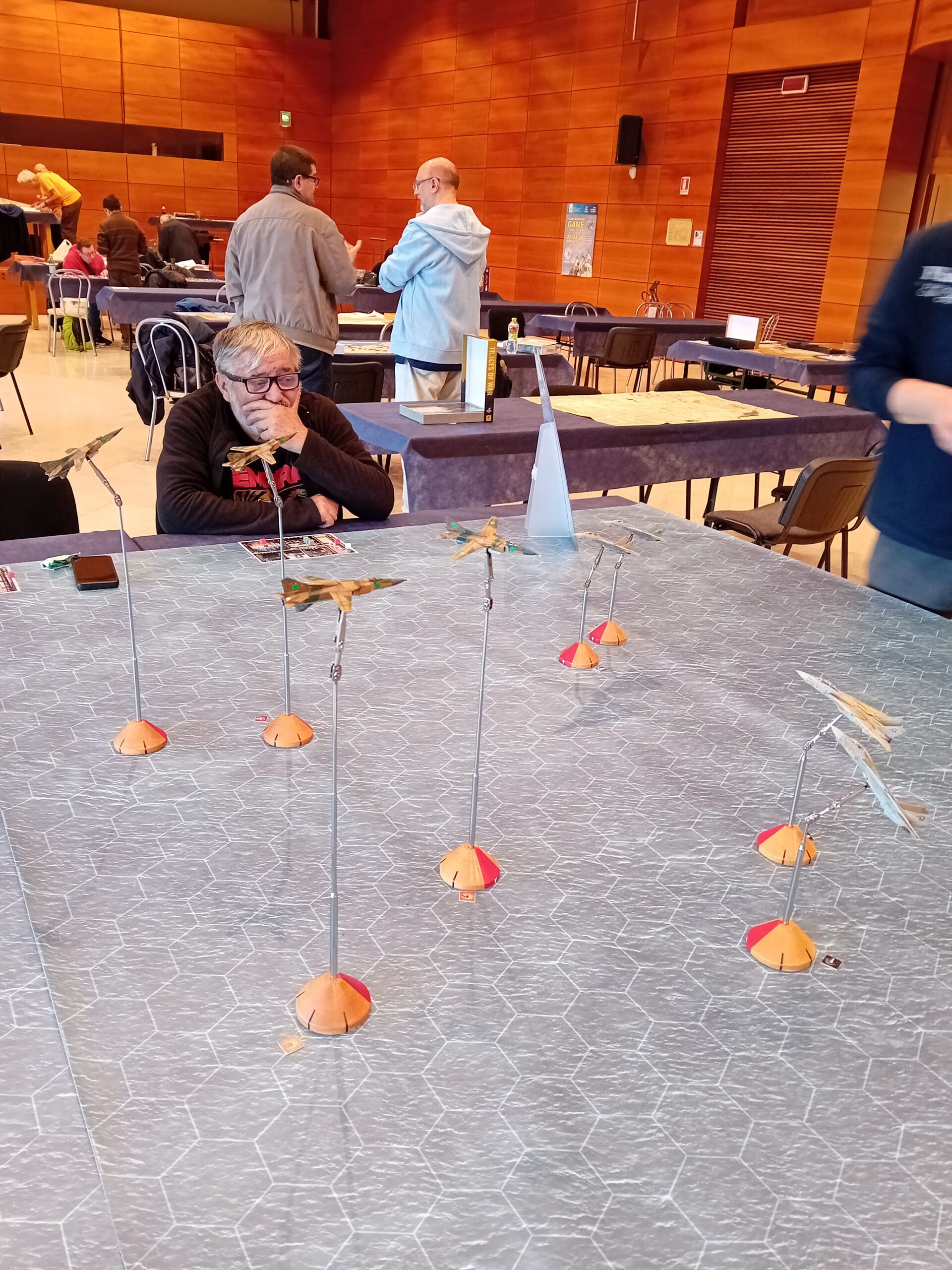During SMGC 2024, the friends from the Ghost Group in Udine, passionate enthusiasts of aeronautical-themed wargames, wanted to test Fast Movers. Thanks to the models prepared by Flavio de Luca, the aerial battle, inspired by the numerous confrontations between Gaddafi’s Libyan aviation and the US Navy, was able to unfold in the third dimension with an invaluable scenic effect. Here’s the description of the scenario:
Gulf of Sirte – January 4, 1989
Following Libya’s unilateral extension of territorial waters in 1973 (with the so-called ‘Line of Death’ closing the Gulf of Sirte to international navigation), tensions escalated when the United States accused Libya of building a chemical weapons facility, and President Reagan ordered the aircraft carrier USS John F. Kennedy to the area for “exercises.” In the historically occurring clash, 2 USN F-14 Tomcats destroyed 2 MiG-23s that had ventured too close to the naval formation.
But how did this important playtest unfold? Let me narrate it with the help of some photos and a touch of pathos…
In an epic aerial battle, four Libyan MiG-23 Floggers received orders to cross the playing area and exit from the north side, to challenge the naval power represented by the USS John F. Kennedy.
On the other side, four US Navy F-14 Tomcats were in flight with the mission to prevent them from approaching at any cost.
Two bot pilots participated in the game, one on each side, bringing the total number of contenders to eight: three humans and one bot on each team.
The two formations, determined to impose their supremacy in the skies, rapidly closed in with a combined speed of about one and a half times the speed of sound, ready to kick off a deadly dance.
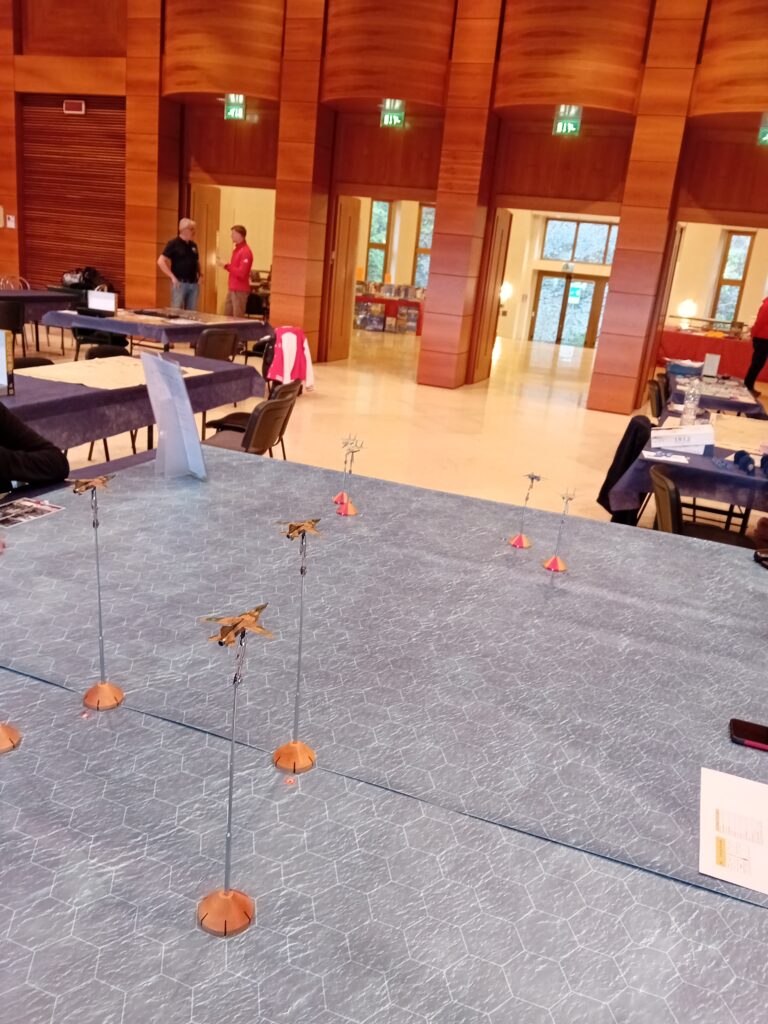
The first shot is fired by an F-14 before crossing the enemy formation, but the AIM-9M missile misses its target, MiG#1, paving the way for a series of aggressive and audacious maneuvers. The leader of the MiG-23s evades another attack, this time from a Sparrow missile, while the F-14 bot, with cold and calculated decisiveness, decides to bypass the confusion of the battle by staying at low altitude and outside the melee…
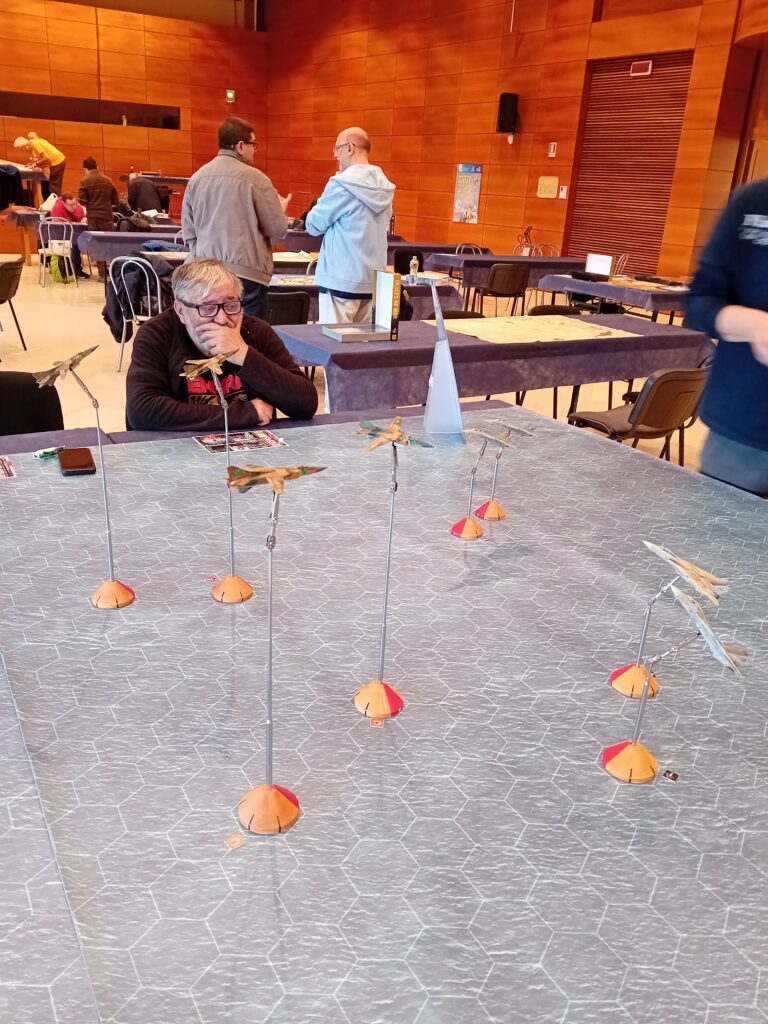
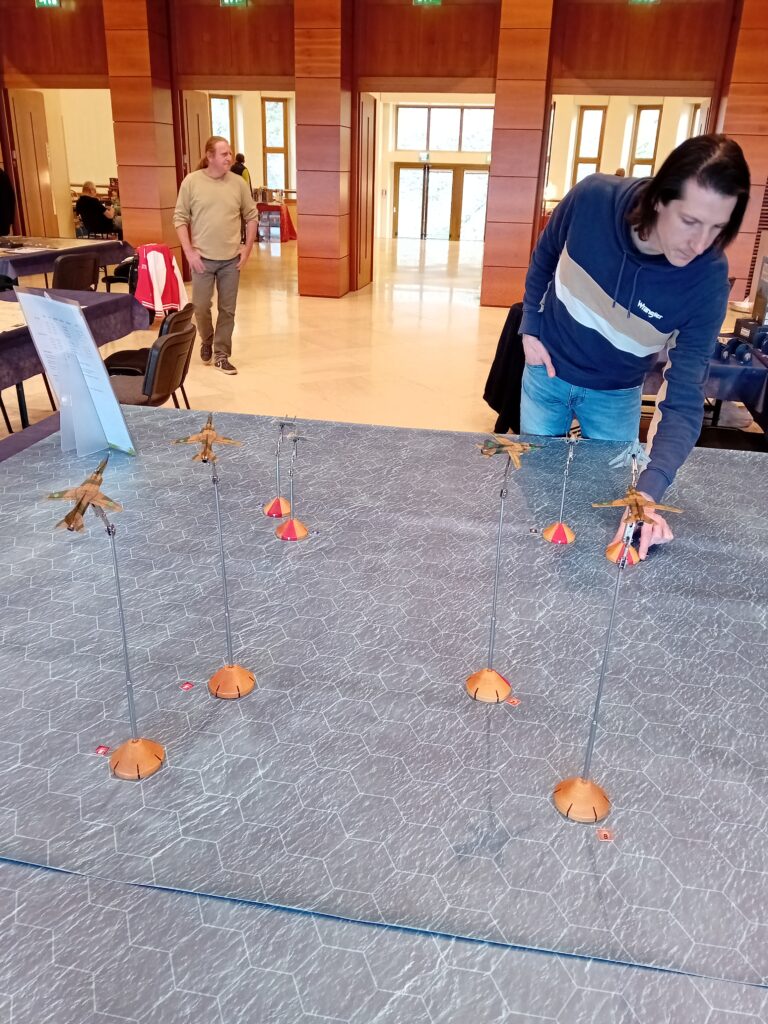
But the action doesn’t stop there: MiG#1 relentlessly heads towards the Kennedy Task Force. Two Tomcats get a lock-on and launch their Sparrow missiles, in a desperate attempt to halt its advance.
However, the real surprise comes when the Mig bot, guided by the instinct of a seasoned fighter, slips between two American jets, heading north at supersonic speed.
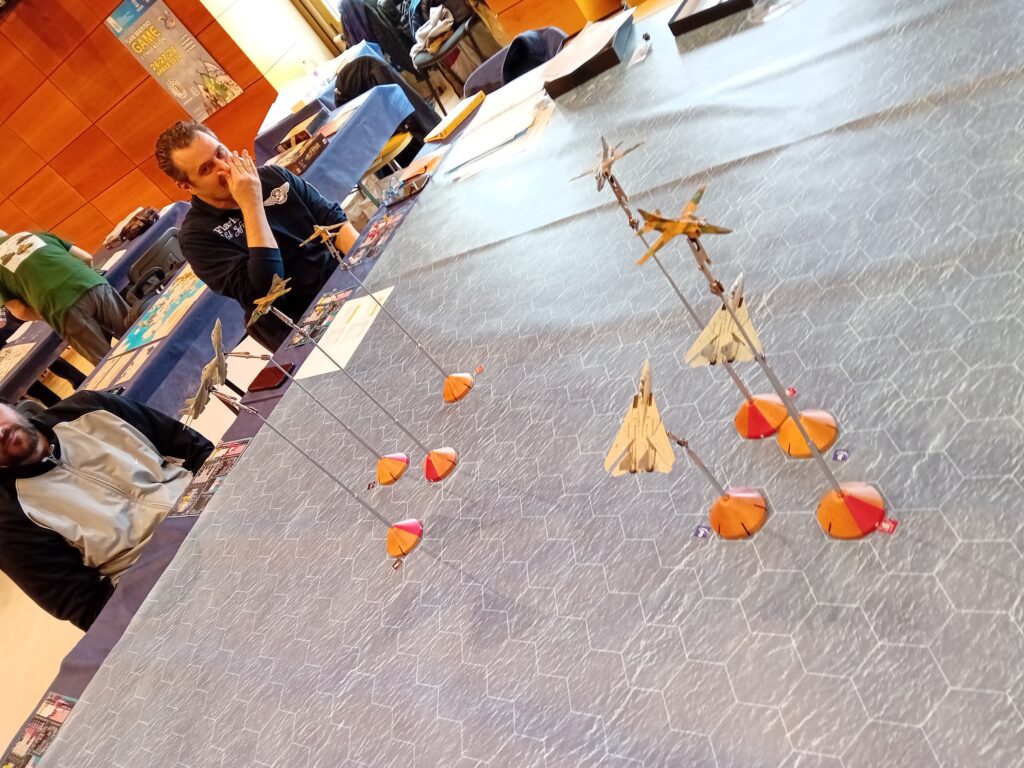
Meanwhile, another MiG tries to go out the northern side of map, towards the Kennedy.
The third MiG, with a human at the controls, seizes the opportunity to launch an R-60 (AA-8) heat-seeking missile towards the tail of a Tomcat chasing the MiGs fleeing northward. But at the same time, the bot-controlled Tomcat, raises its nose climbing from a waves-skimming altitude, and fires an AIM-9M at it.
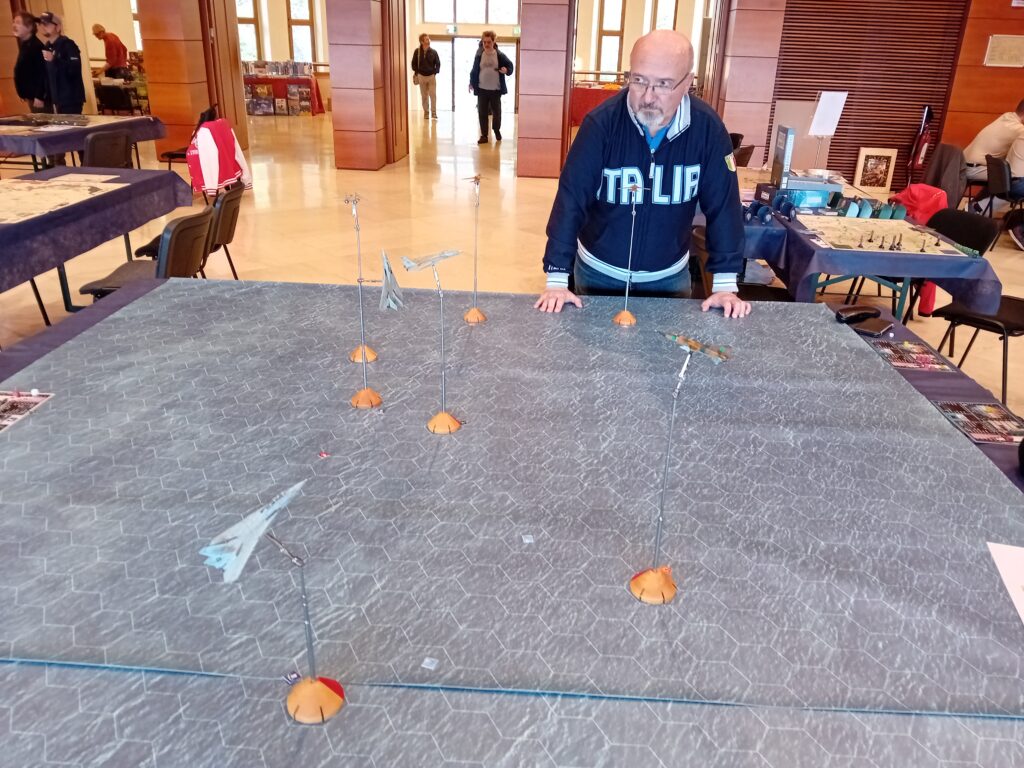
The battle reaches its climax when both Sparrows hit their target, shooting down MiG#1 and forcing the pilot to eject, luckily unharmed. Two MiGs manage to escape the area, granting victory to the Libyan team, but the cost of victory is high: the third MiG, fatally hit by the Sidewinder missile, turns into a fireball, and the pilot is fatally injured in the ejection.
In the scenario, the bots have proven themselves well, despite the seemingly cautious move by the US Navy bot, which instead gave it a favorable attacking position. The Libyan bot also executed a timely switch between engaging enemy fighters and the objective of exiting from the northern side.

